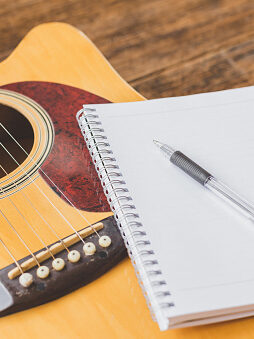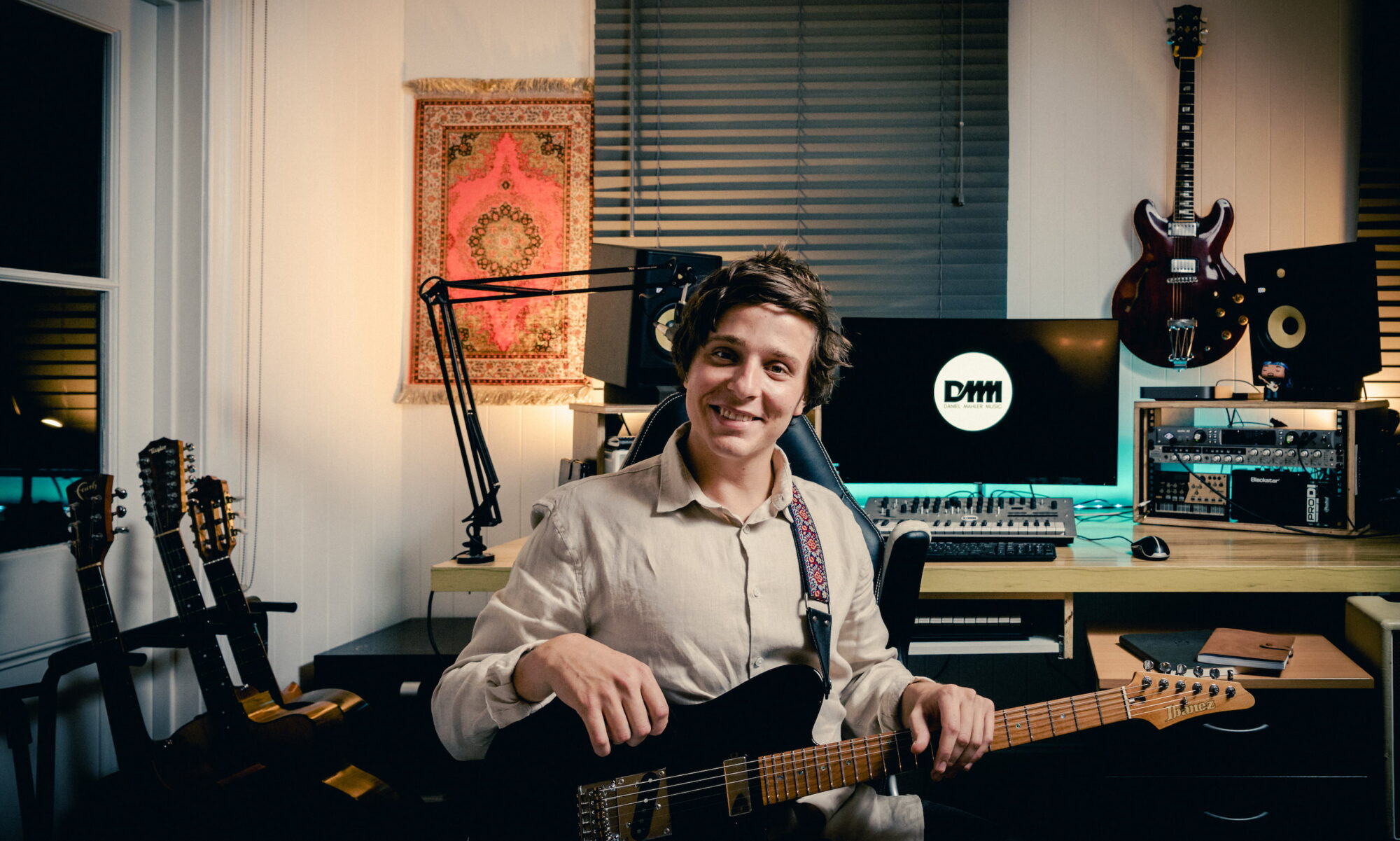When you pick up the guitar, there are two disctinctions to be made.

Practising

Playing
Practising is the process of learning new information or a new skill, and internalising it so that you may recall it in an instant. It involves using the mind to comprehend, the body (hands) to execute the movements, and the ears to moniter and analyse the sound, in turn providing feedback to the brain about how the body is moving and how that affects the sound that is being produced. In the beginning, everything you do on the guitar is practise because everything is new. Once you get over this hump, you can truly begin to play.
Playing is the simple act of playing whatever you want – the reward that comes after you have practised whatever it is you want to play. Playing includes making up melodies or chord progressions, playing songs that you have learnt, improvising to backing tracks, noodling around on the guitar – basically just having no particular agenda other than to enjoy yourself on your instrument.
To make consistent improvement, it’s important to spend time doing both. The more practise you do, the better you can play and have more fun doing it. Conversely, the more you play, the more you realise what you need to practise or learn about more.
Play whatever you like whenever you like, but aim to organise your practise time effectively!
Practise can be segmented into one of four key areas (example practise items for each area area listed below).
Materials
(What)
Technique
(How)
Theory
(Why)
Application
- Notes on the fretboard
- Intervals
- Chords
- Chord inversions
- Scales
- Arpeggios
- Rhythms
- Chord changes
- Slides
- Bending
- Legato
- Tapping
Guitar right hand: - Strumming
- Alternate picking
- Economy picking
- Fingerpicking
- Hybrid picking
- Palm-muting
Bass right hand: - Alternate plucking
- Economy plucking
- Slap and pop
- Fingerpicking
- Palm-muting
- Major scale harmony
- Chord functions
- Ear-training
- Circle of 5ths
- Upper structure triads
- Minor scale harmony
- 6 Diminished scale harmony
- Playing songs
- Learning new songs
- Improvising to backing tracks
- Jam with people
- Learning licks or solos
- Writing music
“That’s a lot of information – what should I practise?“
What you practise will depend on your goals. It goes without saying that there is no point learning how to sweep pick if you just want to learn how to strum your favorite songs. If you want to learn a particular song, let that take up the majority of your practise for a while and give everything else a low priority.
Here are a few scenarios of common playing goals and the relevant practise items which are relevant to each one.
Singer/Songwriter
Rock Guitarist
Jazz Guitarist
- Warmup
- Materials:
1. Cowboy chords
2. Notes on the neck
3. Barre chords
4. Rhythms - Technique:
1. Strumming
2. Chord changes - Theory:
1. Major Scale Harmony
2. Ear Training
3. Circle of 5ths - Application:
1. Learn songs
2. Write music
- Warmup
- Materials:
1. Cowboy chords
2. Notes on the neck
3. Powerchords
4. Barre chords
5. Pentatonic scales
6. Blues scales
7. Major scales
8. Rhythms - Technique:
1. Strumming
2. Chord Changes
3. Alternate picking
4. Slides
5. Bending
6. Legato
7. Palm-muting - Theory:
1. Ear training
2. Major scale harmony
3. Chord functions
4. Circle of 5ths - Application:
1. Learn riffs
2. Learn songs
3. Improvisation
- Warmup
- Materials:
1. Everything that the rock guitarist covers
2. Advanced Arpeggios
3. Chromatic devices
4. Advanced rhythms
5. Chord inversions - Technique:
1. Alternate picking
2. Economy picking
3. Hybrid picking
4. Legato - Theory:
1. Everything the rock guitarist covers
2. Chord functions
3. Upper structure triads
4. Minor scale harmony - Application:
1. Learn tunes
2. Learn etudes
3. Improvise solos
4. Transcribe licks/solos
5. Jam with people
One step at a time…

You don’t need to practise everything in each practise session. This is more of a long-term game-plan which will guide your efforts over time and ensure you learn all the skills required to play the way you want to. You would break your game-plan down into a practise routine which works on 5 or 6 of these things and do that routine daily (or as often as possible) for a period of time, enough to internalise the materials and techniques. Afterwards, check back into the game-plan and change things up – just as an athlete would alter their training regime periodically to continue improving. Your teacher should provide guidance in formulating your game-plan and practise routines because they know what you should be working on and in what order.
Go slow and steady!
When practising, especially in the beginning, you need to move slowly so that you can learn the movements with maximal effiency. You should try and eliminate all unessecary tension from your body (including your legs, back, neck and shoulders), using only the necessary amount of tension in your hands required to play clean notes, and only the necessary amount of hand movement to get from one note/chord to the next. A lot of beginners and intermediate players will tend to lift their fingers too far away from the fretboard when playing, which if left unchecked, can lead to a bad habit which needs to be corrected.
Once you know the notes you need to play for a certain scale, piece of music, chord progression or riff, you should put on a Metronome and play it in time at a very slow pace, to give your body and mind time to process the execution of the music. A good starting point in general is 60 bpm, and ramping up in 10 bpm increments until you reach your current ‘ability-ceiling’. Practising in this way ensures that your are playing correctly with good technique, and you will be able to achieve more success faster.
Economy of motion is the name of the game.
Creative vs non-creative practise?
Another thing to be aware of when practicing is creative and non-creative practise. Non-creative practise includes things like learning chord shapes, scale shapes, prescribed strumming patterns, or learning songs which have pre-written parts – everything is laid out before you and you just have to repeat it until you memorise it.
Creative practise adds an element of, you guessed it, creativity! You can take the chords you know, make a chord progression out of them and create your own strumming pattern or arpeggiation pattern, and now you are doing creative practise, or in other words – making music.
Or take a scale; once you have done the non-creative part of learning the shape and the notes, explore the scale in a creative way by making melodies, harmonising it with intervals, trying to create music with it, with and without backing tracks, drone tones, and metronomes.
You need to do the non-creative practise to learn the thing you’re learning, but the step beyond that is learning how to use it in a creative way. Practising in this way makes the practise process more fun, and also practises your creativity – an essential element of creating music.


